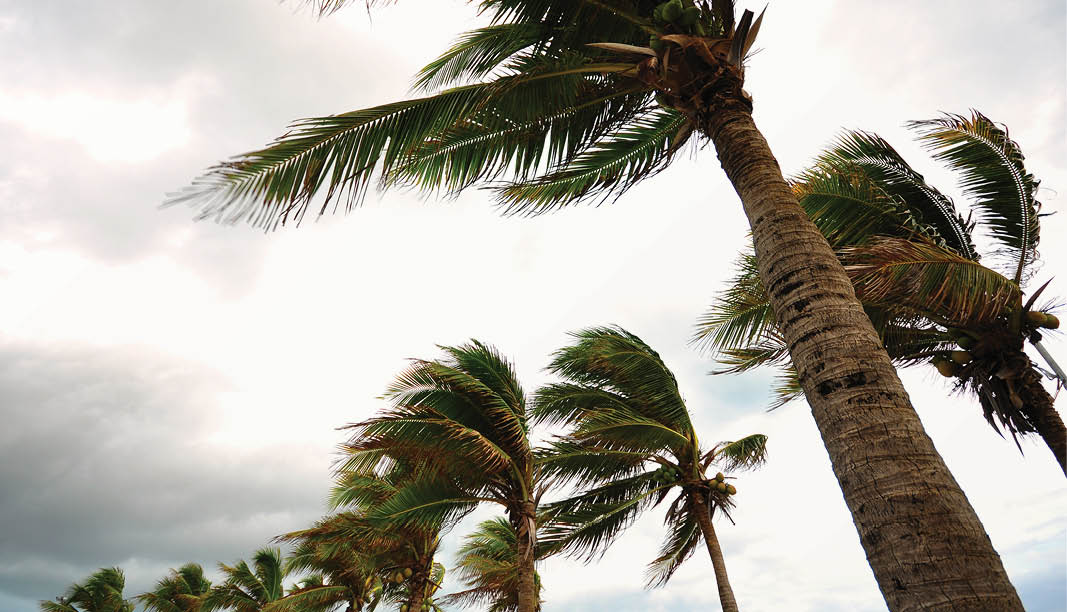
Protect what you have today. Secure your legacy for tomorrow.
Your unique portfolio deserves personalized protection
Greater success in life brings greater complexity and risk. From coverage for homes, collections, liability, cyber security, life and more, the risk management needs of high-net-worth individuals and families warrant a customized approach. You have a legacy to leave, and we have the experience and expertise that can help it last for generations.
Contact us

What’s my liability?
Anyone can be sued for alleged negligent actions, valid or not. In general, the wealthier the person responsible, the greater the damages sought by the injured party.
How much insurance is right for you?
Take the quiz
Introducing The Risk Rundown
A podcast designed to help you and your family protect your wealth through actionable, expert-led conversations.
Podcasts

Experience the difference
We are, above all, creative problem solvers.
Our collaborative team has a long history of translating technical expertise into unique and customizable insurance coverage. This has helped us cultivate a reputation for excellence and reliability, as well as a host of deep-rooted relationships across the insurance landscape.
Our approach“Best insurance brokerage provider”
— Family Wealth Report
“Best high net-worth insurance broker”
— Private Asset Management
“Outstanding contribution to wealth management thought leadership”
— Family Wealth Report
Unique perspectives from our experts

Building resilience in today’s insurance landscape
Only eight days into 2025 and the landscape has continued to shift, causing many clients in Southern California and beyond to ask fearful questions about the insurance industry’s future and risk management. While we have all grown accustomed to watching natural disasters on our television screens or, unfortunately, even closer, few have left people feeling as uncertain as Southern California's recent wildfires. As risk management advisors, we strive to provide accurate information and offer best practices to help you navigate the next phase of the personal insurance market, wherever you may live. Trust that we have been ultra-responsive, with boots on the ground, working hand-in-hand with clients and carriers to get ahead of the situation. In Southern California, we anticipate that homes will be rebuilt with improved building standards to better withstand such events in the future, events that, make no mistake, are likely to continue in the face of a changing climate. Fortunately, new fire-resistant materials and other innovative products and technologies to monitor water flow, temperature, and electrical surges now exist to help mitigate risks. They should be employed in all homes. We are hearing from clients nationwide who are concerned about whether the insurance industry can withstand a catastrophe of this size. Rest assured, the ability to recover from such an event has been well modeled. The bottom line: insurance carriers are well capitalized. The industry will be okay. Exactly how the impact will be felt — locally and nationwide — is yet to be determined. Until more is known, we remain focused on helping clients everywhere with proactive loss control. In most circumstances, preventative actions will minimize future loss and heartache. Here are additional best practices we recommend to all our clients as the landscape continues to shift: Loop in your broker and family members. Whatever the situation, whether you are in the market for a new home, expecting a child, or considering filing a claim, we urge you to consult with your account executive. The more your insurance advisor knows about your future plans and shifting life stages, the better they will be able to help you protect your assets. Similarly, it’s important to have regular conversations about risk within the family. Children, especially teenagers, must understand the potential liability inherent in posting on social media, hosting a party (especially unsupervised events), driving, or college hazing. Minimizing unfortunate surprises also means ensuring spouses understand your insurance program's details. Perform regular policy reviews. Set aside time — at the beginning of the year or when the policy is up for renewal — to review your coverage details, ensuring they remain sufficient and current. For example: Are the correct beneficiaries listed? Have you insured recent acquisitions? Do you need a flood policy to account for shifting climate patterns? In addition, if you have not done so already, enroll in autopay for your premiums. This will safeguard your program by preventing the possibility of missing payments. Strive to prevent avoidable risks. As always, an ounce of prevention is the best protection. We recommend performing background checks before hiring domestic workers, contractors, or anyone else working in or around your house. Also, ensure you have the proper worker’s compensation in place. Regular property inspections are also important; addressing any issues promptly, whether urgent or minor, can prevent bigger problems later. Today’s small hole can become a devastating leak in a storm, and untamed brush can fuel tomorrow’s fire. It is also wise to make plans for potential catastrophic events, such as where to safely store an electric vehicle or how to evacuate collectibles. After a few years marred by earthquakes in New Jersey, floods in North Carolina, and hurricanes in Hawaii, it is clear that no region is immune to once-implausible weather events. Confirm your liability coverage is enough. In a recent survey, one of our carriers found that 92% of high-net-worth individuals were concerned about the size of jury awards in potential cases brought against them. And though that’s understandable in an era of social inflation and nuclear verdicts, few respondents carried sufficient liability coverage. If you think you might be in a similar situation, check in with your account executive or take advantage of our online tool, What’s My Liability. We remain committed to guiding our clients through every difficulty and towards greater resiliency and the best coverage options. Such work is collaborative, so if you have questions or concerns about current trends or your personal program, please be sure to reach out. ...
More info
The dark side of innovation: AI and modern scams
An international financial company faced a serious security breach during an internal video call when fraudsters used deepfake technology to impersonate the CFO and other senior leaders. This deception resulted in a finance employee transferring $25 million, mistakenly believing it was a legitimate request. This is just one example of how scammers are leveraging technology, especially artificial intelligence (AI), to swindle record amounts of money. According to IC3, the FBI’s Internet Crime Complaint Center, such reported losses surged by $300 million in the first five months of 2024 alone. To counter the growing risk, the FBI has announced a nationwide campaign to raise awareness of scams fueled by AI and other technologies. This initiative highlights the importance of understanding these threats and encourages individuals to take proactive steps. In light of this campaign, we wanted to share some of the most common scams along with tips designed to help you stay protected. Common scams Voice cloning: Scammers use voice cloning technology to impersonate a loved one in distress. They may call with urgent requests for money or personal information which is then exploited to gain access to accounts. Deepfake scams: Scammers utilize generative AI to create realistic altered images or videos of public figures, friends, or family. These deepfakes can convincingly mimic appearances and voices to solicit money or sensitive information. The challenge of distinguishing real and fake content poses significant risks. “Wrong number” texts: Scammers send unsolicited texts that appear to reference prior conversations or meetings. By fabricating a context, they aim to prompt the recipient to respond, leading to potential phishing attempts for personal information or financial details. Romance scams: Con artists exploit online dating platforms to build emotional relationships with victims. They often create fake identities, complete with elaborate backstories, and may even propose marriage. As trust builds, they fabricate emergencies or financial hardships, ultimately requesting money transfers. Victims can face significant emotional trauma and financial loss, as scammers can persuade them to send large sums of money over time. Election scams: Fraudulent political action committees (PACs) can mislead individuals into donating funds for fake causes. The funds solicited may be funneled directly into the scammers’ personal accounts, leading to financial loss for unsuspecting donors. Moreover, such scams can undermine trust in genuine political fundraising efforts. Holiday scams: Tactics during the holiday season include failing to deliver items that have been paid for, misrepresenting items on auction sites, as well as gift card fraud. Victims may end up losing money on purchases that never arrive or unwittingly provide gift card information, which can be redeemed immediately by the scammer. How to protect yourself Scammers thrive on urgency to exploit their victims. Therefore, the best defense against AI-powered scams is to pause and resist the pressure to act quickly. For example, if you get a call from someone claiming to be your child or grandchild in trouble, verify the situation by putting them on hold and making another call before sending money. It’s also important to be cautious with links sent from banks, online retailers, delivery companies, or any organization. Instead of clicking on links, it’s safer to visit their official websites directly to manage your accounts, make payments, or donate. Always remember, never invest in or give money to someone unless you can verify their identity. If you're unsure, consult your financial advisor before transferring any funds. And if you do feel the need, consider giving only what you’re comfortable with potentially losing. Another key point is to review your cyber-insurance policy. Coverage for scams and fraud can vary widely, so it's wise to discuss your specific needs with your account executive. Keep in mind that policies usually don’t cover voluntary money transfers, even in fraudulent scenarios. If you do fall victim to a scam, contact the relevant institution immediately to request a reversal or a refund for credit, debit, gift cards, or wire transfers. While results may vary, it’s worth trying. Cryptocurrency payments, by the way, are generally not reversible, which is why many scammers demand them. ...
More info
Deflating “social inflation’s” effect on insurance costs
An article in The Wall Street Journal highlighted another indicator of the growing repercussions of a phenomenon known as social inflation. This costly trend is impacting liability cases nationwide, adding yet another variable affecting insurance coverage. This primer explains the nature of social inflation and offers guidance on how to help mitigate its impact. What is social inflation? Social inflation refers to the rising payouts in liability cases caused by the shifting social and cultural attitudes about who is responsible for absorbing risk. Fueling those attitudes are economic disparity, the influence of social media, and legal marketing. Today’s juries are finding it easier to hold both people and companies with means accountable, and at a much higher cost. In fact, the term “nuclear” verdict is any jury award of at least $10 million. One reason for the increased stress on the insurance industry is that the number of “mega nuclear verdicts” of $100 million leveled against corporations is at a record high, according to the U.S. Chamber of Commerce. Inevitably, this landscape also filters down to individual coverage. What puts you at risk? Unfortunately, a host of seemingly innocuous activities can increase the chances of being sued, including posting online, driving, hosting social events, and serving on boards. Even seemingly minor incidents can lead to lawsuits. For example, someone was sued after tripping on an escalator and falling on the person in front of them. Parents are particularly vulnerable, as their children's actions can also lead to legal exposure. How are insurance carriers responding? Carriers are concerned about whether current premiums will cover the rising payouts. In addition, this concern is affecting not only the cost of coverage, but also the criteria used to determine who is insurable. Their risk calculations allow for little wiggle room, as the price of even multi-million-dollar liability policies is relatively small. What do you need to do? There is no way to completely eliminate the risk of liability lawsuits, so it’s critical that you have the proper liability coverages, at sufficient amounts, in place. You should consider: Excess Liability: This is one of the most critical aspects of your insurance program. The required coverage amounts vary depending on individual factors such as your net worth and visibility. Generally, $10 million of coverage is recommended for most high-net-worth individuals, although we have secured upwards of $50 and $100 million pending on lifestyle. Uninsured and Underinsured Motorists (UM/UIM) coverage: This protects you and your assets in the event of an accident caused by a driver with inadequate or no insurance. The number of uninsured drivers is on the rise, making this coverage increasingly important. Employment Practices Liability (EPL): This protects against claims made by domestic workers. Relatedly, we recommend background checks on anyone seeking to work in your home. Directors and Officers insurance: Anyone sitting on a nonprofit board should ask their insurance professional to review the organization’s coverage to confirm that sufficient limits are in place. If they are not, we will help you secure the proper protection. Events: Before hosting large gatherings, consider a specific event policy to provide additional liability protection. What can you do to better mitigate social inflation’s impact? Be vigilant to any aspect of your lifestyle that has the potential to increase liability risk. Your online presence is particularly important, as what you post can lead to lawsuits and may be monitored by carriers when assessing coverage eligibility. Activism also carries risks, with carriers adding exclusions for those extolling political beliefs on public platforms. Consider hiring a reputation professional to review your public persona.Additionally, if you have teenagers, never allow alcohol or drugs to be served at your home as you can be held responsible for the actions of minors. A thoughtful conversation about your risk profile can go a long way toward preventing a nuclear verdict from undermining your financial security and legacy. If you have concerns, be sure to reach out to your insurance professional. ...
More info
What you need to know about wind coverage
These days, the proverbial “winds of change” have transformed into literal threats, causing significant and escalating wind-related damage. This damage is no longer confined to traditionally affected areas. To mitigate exposure, insurance carriers are now reducing coverage, which could impact your insurance program, regardless of your property’s location. Here are four key points to understand about wind coverage— and what actions you should take in the face of these shifting currents. 1. Wind damage escalates quickly. Severe winds can turn everyday objects, like lawn furniture or garbage cans, into dangerous projectiles capable of breaking windows. Once the integrity of your home is compromised, it can create a vacuum effect that sucks in debris and water, leading to extensive structural damage. Similarly, tiles torn from the roof by wind can open a hole, allowing rain to pour in and cause significant water damage. 2. High-wind events are impacting more regions. Climate change is leading to more frequent and severe wind events, even in areas that were previously unaffected. While Southern coastal areas like Florida, the Carolinas, and Texas are still most at risk, regions further north and inland have also been impacted. Hurricanes are becoming stronger, with more Category 4 and 5 storms. The Midwest, meanwhile, is also undergoing greater wind damage from intense convective storms and tornadoes. In all cases, weather models predict these trends will continue. 3. There are effective strategies to help windproof your property. Making your property as windproof as possible is crucial to minimize the likelihood of loss and maximize insurability. Even properties in high-risk areas can be better protected against Category 5 winds with the right measures. Many high-risk areas, like parts of Florida, have strict building codes that offer guidelines for wind proofing. Key protective measures include: Securing roofs: Regularly inspect roofs and address repairs promptly. Ensure roofers follow guidelines for nail-spacing and materials designed for high-wind resistance, and that construction conforms to the latest codes. Strengthening windows: Install high-wind-resistant windows or hurricane shutters. Clearing exteriors: Trim trees and branches near structures and regularly remove debris throughout your property. Before a storm, bring in outdoor items like lawn furniture, garbage cans, and anything else that could be tossed around. 4. Collaborate for the best coverage. Much like wildfire insurance in California, carriers are becoming increasingly cautious about covering wind-related damage. This trend, which began with the destruction caused by Hurricane Andrew in 1992, has led to more restrictive coverage each year. Wind coverage is generally a component of homeowner’s insurance, but some states, such as Florida, carriers can separate it, offering it with higher deductibles or excluding it altogether. Securing wind coverage can be both challenging and costly. Working closely with your broker is essential to determine the best strategies for covering both existing and potentially new properties. Our team has deep expertise in this market, which makes us best positioned to secure coverage for you, either through discrete policies or creative outlets like non-admitted insurance companies. Likewise, we are prepared to fight for your claims in situations, both clear-cut and otherwise. In today’s climate, understanding the specifics of your insurance policies is more crucial than ever. Many clients are opting for higher deductibles, hurricane deductibles, and certain limitations or exclusions to lower their premiums, which can leave them more vulnerable after a storm. If you have any questions about wind protection or your coverage, please reach out at your earliest convenience. ...
More info
Protecting your trending collectibles
A new generation has embraced the joy of collecting, leading to a surge in inquiries about how to best protect a diverse range of fine and rare items. While watches continue to be an important signifier for younger clients, there is a growing interest in collecting sneakers, spirits, and trading cards. Here, we offer our insights into the purchase, care, and insurance of these trending collectibles. Luxury watches Watches are particularly vulnerable to loss: Due to their wearable and visible nature, watches are an easy target for theft and susceptible to catching onto something and falling off unnoticed. To mitigate these risks, ensure the latch is secure and the watch doesn’t hang too loosely. A loss is particularly easy to recoup: If a lost watch is covered by a valuable article policy, it can be claimed as a mysterious disappearance and its value will be typically reimbursed without much hassle. This same policy also covers stolen items. However, you will not be compensated for a counterfeit watch, so ensure the authenticity of any watch that was not purchased directly from the watchmaker. There are various coverage options available: As with jewelry, you can opt for blanket coverage or schedule each piece individually. Blanket coverage limits payouts, while scheduling ensures each item is insured for its full value. Whichever option you choose, it’s important to maintain detailed, up-to-date written descriptions or photos of your collection, and store these records in a home safe, ideally bolted to the foundation and connected to an alarm. Spirits Beware of counterfeits in the luxury spirits’ market: The luxury spirits market is increasingly plagued by counterfeit products, which can deceive even discerning buyers. To protect yourself from purchasing a fraudulent bottle, always conduct thorough research. Understand the proper care and storage of your spirits: Spirits are more resilient than wine as they will not spoil as easily. However, it is still important to store your bottles in a climate-controlled environment and away from sunlight. Spirits should be kept upright to prevent high-proof alcohol from degrading the cork. Spirit policies differ from standard wine policies: Spirits are not typically covered by standard wine policies. Ask your broker about a premium “all-risk” valuable articles policy to properly protect your collection. Rare sneakers The best protection is prevention: Due to the limited availability of many styles, even adequate coverage cannot guarantee a direct replacement for damaged pairs. We suggest storing every pair of sneakers and their original boxes, in spacious plastic or acid-free containers within a climate-controlled, shaded environment. Understanding the distinction between wearing and displaying: Sneakers lose their eligibility for insurance coverage once they are worn. It's advisable to display them, rather than wearing them, to help preserve their worth and protect from damage. Keep track of their value and inventory: Current carrier policies for sneakers are evolving, typically requiring detailed listings of each pair and its current appraised value. Given the market’s volatility, owners must regularly update these valuations. We recommend documenting your collection with photos or videos for added security. Trading cards Handling trading cards with care: The condition of a card greatly affects its price, and body oils or pressure from your fingers can smudge or otherwise cause damage, particularly to the edges. Keep them in protective sleeves and store cards in binders or card storage boxes in a climate-controlled shaded environment. Know the value of your trading cards: To fully appreciate and manage your trading card collection, it's essential to organize and catalog each item meticulously. By doing so, you gain a comprehensive understanding of what you possess and can accurately assess the value of your collection. Consult your broker for coverage: Card policies, like those for sneakers, are constantly evolving, so it’s crucial to stay informed. Regularly consult with your broker to discuss the specifics of your collection and ensure it is adequately covered. Collecting is a timeless pleasure, and ensuring each piece remains a source of joy is essential. To ensure your collection will be treasured for years to come, be sure you work with a professional with deep expertise in this luxury market. While this brief overview touches on some key points, we are always happy to discuss any specific questions surrounding your collectibles. ...
More info
Protecting yourself from common liability risks
An unwelcome consequence of prosperity is that high-net-worth individuals become more vulnerable to the threat of personal liability suits, whether legitimate or not – especially in today’s litigious world. Each year brings a new peak in both the number of cases and the total amount paid out through a settlement or judgment. Here are today’s most common liability risks and our advice on how to safeguard against them. 1. Risk: Visibility A magazine feature about your home, social media posts, board service or a garage full of luxury cars — all can attract unwanted attention, even if you aren’t a celebrity. What you can do Limit social media posts highlighting your jewelry, luxury vacations, home furnishings, or other obvious signifiers of a high-end lifestyle. Before speaking in public, consider having your remarks reviewed by a professional to ensure that nothing you say could be construed as slanderous. 2. Risk: Minors and Young Adults As long as minors and young adults permanently reside at your address, you are responsible for their actions. The threat they pose to your liability increases as they get older, such as when they obtain their driver’s license or go to college, where incidents like hazing may occur. Additionally, their social media activity can lead to issues like cyberbullying or unwanted attention to your family’s lifestyle. What you can do As a rule, children are often unaware of liability issues, so it’s crucial to keep them fully informed, especially teenagers who are more likely to engage in risky behavior. Consider enrolling them in a defensive driving course and educating them on the significance of safe driving habits. As much as you can, limit or monitor their social media usage, and never allow alcohol or drugs at gatherings you host. 3. Risk: Entertaining Inviting a large group into your home can be a wonderful experience, but it also comes with elevated liability exposure. Serving alcohol can have serious repercussions should a guest be hurt in a drinking-and-driving or pool accident. What you can do If the pool will be open to guests, it is wise to hire a lifeguard, especially if children are present. Ensure that any outside vendors you hire are covered by their own workers’ compensation and general liability policies. Additionally, consult your broker about situation-specific liability protection. If you frequently host parties, confer with your wealth manager and attorney about transferring your property to a trust or LLC to create legal separation in the event of a lawsuit. 4. Risk: Renovations and repairs Any work being conducted on your property, whether it’s daily maintenance or new construction, exposes you to liability in the event of a worker being injured on the job. What you can do When hiring contractors, prioritize those with solid reputations. Limit the number of subcontractors involved and make sure everyone provides proof of workers’ compensation and general liability insurance. 5. Risk: Driving The potential trouble caused by automobile accidents has increased over the last several years. Texting, talking on the phone or looking at a vehicle’s screen is just as perilous as driving under the influence. What you can do Recognize the seriousness of taking eyes off the road, whether you’re getting directions or regulating the air conditioning. Use technological assists, such as Do Not Disturb, to help avoid the temptation of texting. And, of course, never drive while impaired. Proper Coverage Accidents happen, and with successful individuals increasingly becoming targets of costly lawsuits, it’s important to not only have personal liability insurance but the correct amount. Personal liability insurance is commonly included in policies like homeowners, automobile, and watercraft. It shields you from losses resulting from negligent acts that cause injury, property damage, or reputational harm, except in the event of criminality or malicious intent. However, the amount of coverage provided by these is often limited, therefore, we often recommend purchasing personal excess liability coverage which provides an additional layer of protection. Determining the proper amount of coverage requires a thoughtful conversation with your broker but you can start by taking our Liability Assessment Tool, which helps suggest a range of liability based on your lifestyle. The unfortunate truth is that personal liability risk is everywhere, and while it cannot be entirely prevented, paying extra attention to the scenarios that result in most claims will prove to be beneficial. ...
More info
Helpful insights straight to your inbox
Helpful insights straight to your inbox
